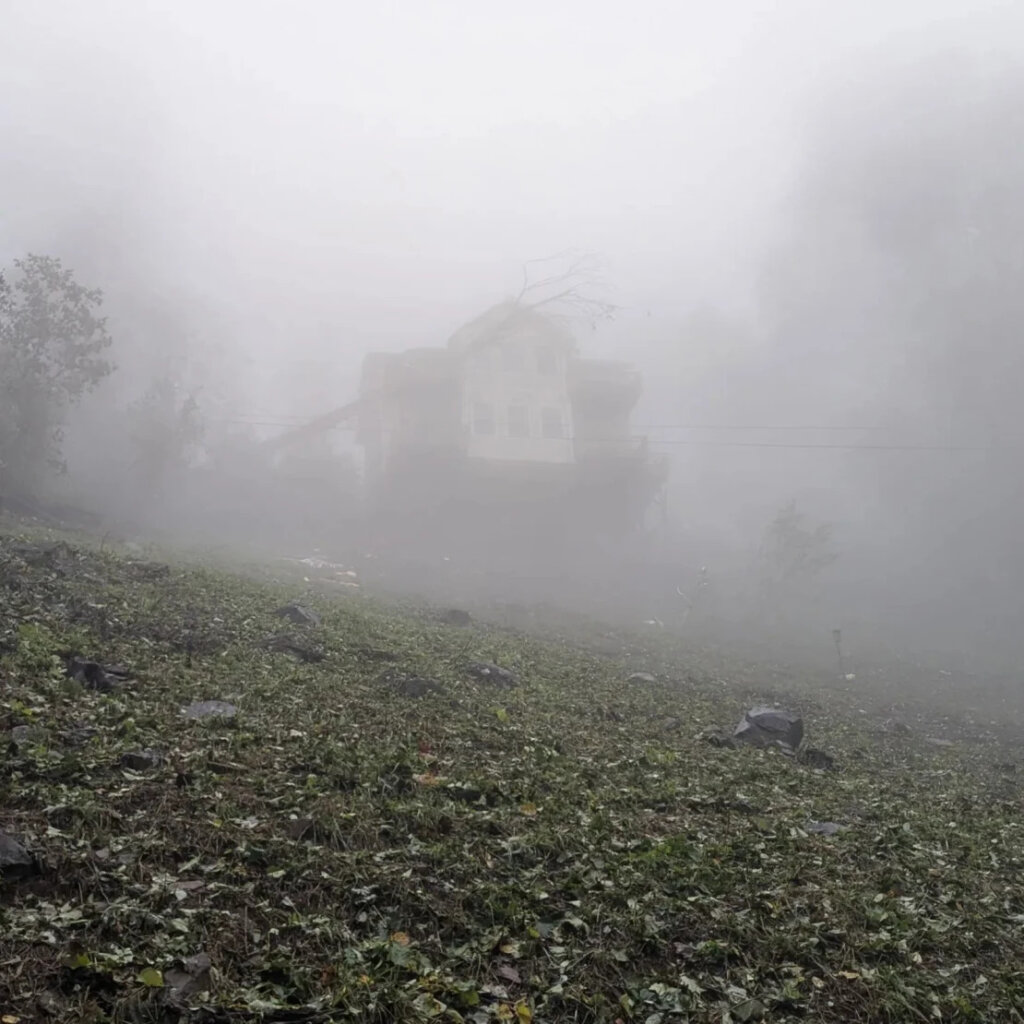Hurricane Helene recently made landfall in Western North Carolina, causing extensive flooding and leaving a lasting impact on our town. Many locals—including those of us who experienced the unpleasant reality of our homes flooding without flood insurance—are struggling to deal with the devastation brought on by widespread flooding as we navigate the aftermath of Hurricane Helene. From evaluating damage to comprehending restoration expenses, this blog article seeks to offer helpful resources and information to anyone coping with the aftermath of this tropical storm.

The Impact of Hurricane Helene in Western North Carolina
Not only did Hurricane Helene severely harm Asheville, but it also impacted other parts of South Carolina. Residents and businesses were shocked to learn about downed power lines, flooding, and storm damage. Numerous localities encountered severe difficulties, such as Biltmore Village, the River Arts District, and Buncombe County.
On Friday afternoon, the Swannanoa River and other nearby bodies of water overflowed, flooding some neighborhoods several feet deep. First responders and local authorities are extremely concerned about the death toll as homes were washed away. It’s clear from the total destruction that many families now face a protracted path to recovery efforts.
Humanitarian Efforts and Relief from South Carolina
As the aftermath of Hurricane Helene continues to affect the Southeast, humanitarian efforts and relief operations are in full swing. Organizations and individuals are working tirelessly to provide vital supplies, including food, water, and shelter, to those in need. In Western North Carolina, the North Carolina Air National Guard has been instrumental in delivering aid to rural communities, using a C-17 Globemaster III to transport over 100,000 pounds of supplies. The Asheville Regional Airport has become a vital distribution center for humanitarian aid, with blocked roads and downed power lines hindering ground transportation. The relief efforts are focused on Western North Carolina, specifically in areas affected by Hurricane Helene, with an emphasis on delivering aid to rural communities that have been cut off from regular supply routes. Asheville Regional Airport has played a significant role in this area allowing continuous flow of vital supplies like food and water bottle especially for isolated communities in South Carolina.
Casualties and Missing Persons
The death toll from Hurricane Helene continues to rise, with at least 220 people confirmed dead across six states. In North Carolina, 72 people have lost their lives, with many more still missing. In Buncombe County, officials report that about 75 active missing persons cases remain, with rescue crews and volunteers working around the clock to locate those still unaccounted for. The storm’s impact has been particularly devastating in Western North Carolina, where widespread flooding and downed power lines have made it difficult for emergency responders to reach affected areas. As the search for missing persons continues, officials are urging residents to remain vigilant and report any information that may aid in the recovery efforts.
My House Flooded—What Do I Do?
If flooding affects your home, your first reaction may be panic. Nonetheless, you may effectively handle the situation if you maintain your composure and act methodically.
- Assess the Storm Damage: To begin, determine how much of your house has been flooded. Check for evidence of storm damage, keep an eye out for standing water, and look for leaks in your roof. This evaluation will assist you in determining what requires urgent attention.
- Prioritize Safety: To avoid further risks, cut off your home’s gas and electrical supplies when it’s safe to do so. Floodwaters should not be crossed because they could be dangerous and contain debris.
- Contact Professionals: It’s critical to contact water damage restoration experts after evaluating the damage. They can assist in removing moisture from your house and locating any concealed damage that might not be apparent right away.
- Document Everything: Make a thorough inventory of the damaged goods and take pictures of them. This documentation will be essential if you ever need to submit an insurance claim or apply for financial aid.
- Reach Out for Help: Several organizations are offering assistance to the affected areas. Never be reluctant to ask for help from friends and local disaster relief groups that are delivering supplies such as bottled water, food, and other necessities.
Understanding Repair Costs Due to Storm Damage
After floods, the expense of repairs is one of the main worries. Being aware of potential costs will enable you to make appropriate plans.
How Much Does It Cost to Repair My Leaking Roof?
It’s critical to take immediate action if your roof has been damaged in order to avoid other problems, such as internal water damage to your house. The extent of the damage and the kind of materials required will determine how much it will cost to fix a leaky roof.
- Minor Repairs: Homeowners should budget $300 to $1,000 for minor leaks or problems. This frequently includes repairing a few shingles or caulking leaks.
- Major Repairs or Replacement: The expense of fixing major damage to your roof can quickly rise. The cost of a complete roof replacement might vary from $5,000 to $10,000 or more based on the materials and size of your house.
How Much Does It Cost to Dry Out My Flooded House?
Another important consideration is the cost of drying out a flooded residence. The amount needed for drying out can normally range from $1,500 to $5,000, depending on the extent of the flooding and the size of your home. This procedure includes:
- Water Extraction: To remove standing water, professionals utilize vacuums and pumps.
- Dehumidification: To lower moisture levels and stop the growth of mold, dehumidifiers are employed after water extraction.
- Cleaning and Sanitizing: In order to get rid of any mold or dangerous germs, the area needs to be cleansed and sanitized.
The Emotional Toll of Flooding and Downed Power Lines
Hurricane Helene’s outward devastation is not the whole story. The effect on residents’ emotions is significant. Many people are losing not only their belongings but also their stability and memories.
Residents have shared their struggles:
- “We don’t have running water, electricity, or cell reception. We’re desperately waiting for then to restore power”
These remarks draw attention to the terrible circumstances that many people are facing, which makes rehabilitation attempts more difficult and escalates the anxiety level in the region. Black Mountain and Spruce Pine, two of the rural communities near Asheville, have also reported feeling isolated due to flooding and fallen trees.
Environmental Concerns and Health Risks
The aftermath of Hurricane Helene has raised significant environmental concerns and health risks in the affected areas. In Western North Carolina, the Swannanoa River has overflowed its banks, causing widespread flooding and contamination of water sources. The River Arts District in Asheville has been severely affected, with many buildings and homes damaged or destroyed. The storm has also caused significant damage to the region’s water infrastructure, leaving many without access to clean drinking water. Officials are warning residents to avoid contact with surface waters affected by the flooding, as several wastewater treatment plants have been compromised and are temporarily unable to treat effluent before it enters receiving waters. The lack of clean running water has also raised concerns about the spread of waterborne diseases, with residents advised to collect nondrinkable water from a local swimming pool for household needs.
Insurance and Financial Assistance
It’s important to know that most regular homeowners insurance policies do not cover flood damage if you’re unsure about your coverage. You might need to look into other options if you’re not covered for flood-related expenses:
- Disaster Assistance Programs: Following a natural disaster, impacted parties are frequently given financial support by several governmental and charity groups. Consult your local government to find out what is offered.
- Home Insurance Options: Talk to an insurance representative about your choices for future coverage if you did not have flood insurance before the storm. In high-risk areas, flood insurance can be an essential safety net.
- Emergency Loans: To assist homeowners in paying for necessary repairs, a few banks and credit unions provide emergency loans. Examine the offerings of nearby financial institutions to determine your possibilities.
Preparing for Future Storms
Even though Hurricane Helene’s effects are still being felt, it’s critical to plan ahead and get ready for potential disasters. The following actions can help reduce the likelihood of flooding in your house:
- Install Sump Pumps: If flooding occurs frequently in your home, you should think about installing sump pumps in your crawl spaces or basement. When it rains a lot, these can assist eliminate water quickly.
- Elevate Utilities: Make sure that the levels of heating, power, and other utilities are higher than they may be during a first rain or flood. In the event that flooding happens again, this can reduce damage.
- Create an Emergency Plan: Having a plan for communication and evacuation in case of an emergency can be very helpful. Ensure that everyone in the family is aware of the plan and each person has easy access to the necessary contact information.
- Stay Informed: Monitor local weather reports and stay alert for any warnings that may be issued. Prompt action can prevent property damage and save lives.
In Summary
Many residents in Western North Carolina and Asheville locals are dealing with catastrophic damage and severe damage as a result of Hurricane Helene, including flooded homes and psychological suffering. Remind yourself that you are not alone if you are coping with the fallout. Consult with specialists, local groups, and your community for support.
We can rebuild and come out stronger if we know what to do after floods, how much it will cost, and how to stay ready for future storms.
Let’s band together as a city and a community to help one another through this trying period and give those impacted access to services and power again. All of us, from the Florida coast to the North Carolina and Western North Carolina mountains, are part of a wider family that can bounce back from even the most dire circumstances. Read more…

